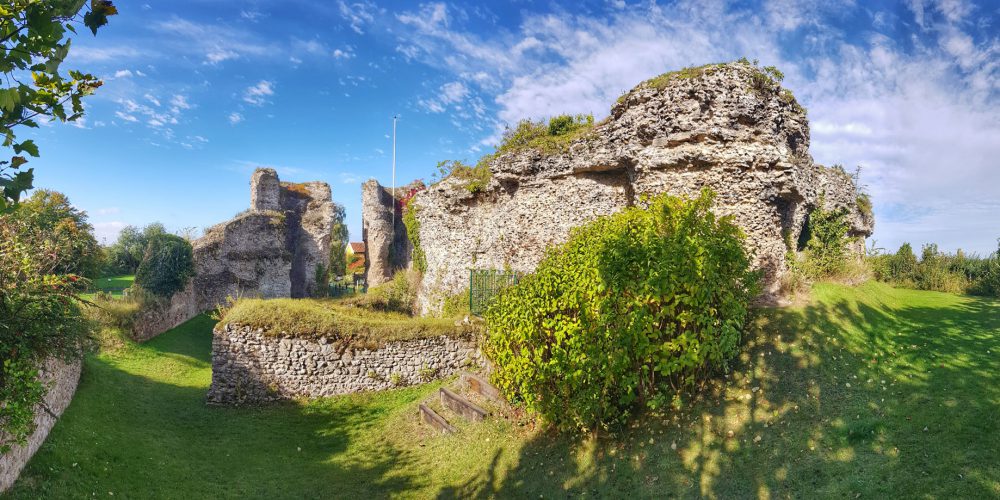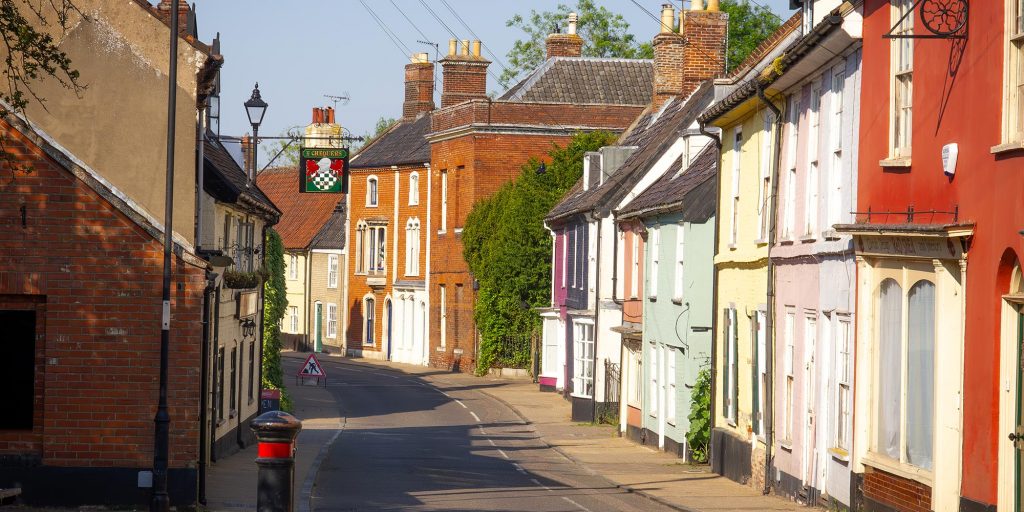The Bigods were a powerful Norman family who assisted King William with the Conquest of England in 1066. As a reward for their support, he granted them manors and lands throughout East Anglia, including Bungay and Framlingham.
The family properties were inherited by Hugh Bigod in 1120. He became a bold and charismatic leader amongst the local barons, using Bungay as his power base. In 1136 he raised an army against King Stephen and seized the royal castle of Norwich. In order to subdue him, Stephen was obliged to march upon Bungay in 1140 but in the negotiations which followed, Stephen found it expedient to reward Bigod with the title of Earl of Suffolk in order to win his future loyalty. This was an ill-judged decision, resulting in Bigod winning even greater respect and support in the region and he was soon raising an army against the King again.
When Henry II acceded to the throne in 1154 he deprived Hugh of his lands both in Bungay and Framlingham, although he was permitted to retain his title of Earl. By 1163 he no longer seemed to be posing a threat, and his properties were returned to him. It was at about this time that he commenced the building of a stone keep, which probably took about ten years to complete. Although not one of the largest castles in the country, it was constructed with walls between 5 – 7 metres thick and, standing more than 33 metres high (taller than the existing tower of St. Mary’s church), Hugh could claim that it was one of the most impregnable fortresses in the kingdom.
With this new stronghold for protection, in 1173 he joined forces with the Earl of Leicester against Henry II, and together they captured the royal castle of Haughley. Bigod also made unsuccessful attempts to seize Dunwich and Norwich; resulting in Henry mustering a massive army against him, which encamped at Syleham, near Diss.
It is thought that it was at this point that Hugh Bigod uttered his famous boast:-
“Were I in my Castle
Upon the River Waveney,
I wouldne give a button
For the king of Cockney”
He was obliged to meet with the king at Syleham, and submit. He was declared an outlawed traitor, his armies were disbanded, and all his properties surrendered. The king arranged to have both Framlingham and Bungay castles destroyed, and began the construction of a mine gallery beneath the walls of the Bungay keep, but eventually Hugh managed to save it from destruction on payment of one thousand marks.
Thereafter he departed to fight in Syria, and died in c. 1178. The properties were restored to the Bigod family by Richard I, but they preferred to inhabit and re-fortify the castle at Framlingham, and Bungay remained unoccupied until Roger Bigod inherited the title of the 5th Earl in 1269. He decided to renovate Hugh’s stronghold, and obtained a licence to crenellate it, erecting a gate-house, and lofty curtain walls to encircle the original keep. He did not occupy the building for very long, dying soon after the renovation was completed in 1297.
He had no heirs, and the castle devolved to the Crown, when it was given to the 5th son of King Edward I, Thomas of Brotherton. When Thomas died in 1338 it passed to his two daughters, both Plantagenet princesses by birth, Alice de Brotherton and Margaret of Norfolk (who also founded Bungay Market). There then followed a tragedy for poor Alice. At the time of her inheritance she was just 14 years old and married to the older Edward Montagu, younger brother of William Montagu, first earl of Salisbury and Bishop of Ely. Not 15 years (and five children) later, in June 1351 she was brutally murdered – by her husband Edward and two of his retainers. According to Louise Wyatt’s book, Edward I’s Granddaughters, by 1350 Edward Montagu was showing his dark side and was part of the knightly criminal gangs that terrorised local areas. Alice, sadly, drops from historical view after here death.
The castle then passed into the hands of various different owners but remained principally unoccupied, being described in a document of 1382 as “old, and ruinous, and worth nothing a year”. In 1483, it passed into the possession of the Howards, Dukes of Norfolk, and the family continued to own it, apart from brief periods until the late 20th century.
Finally, when Dr. Leonard Cane became the Town Reeve of Bungay in 1934 he organised a programme of excavation and repair, rebuilding parts of the decayed walls, and revealing many features which had been hidden during the last centuries. In 1987 the castle was presented to the town by the Duke of Norfolk with an endowment towards its preservation. It is now owned and administered by the Castle Trust. Access to the castle is through the courtyard and cafe ‘Bigod’s Kitchen’ which is adjacent to the castle. There is an interpretive model of the castle on display in the cafe courtyard. The cafe caters for all tastes, including vegan.
Update: the Castle will be closed for all of 2024 for repairs.
But do visit Castle Hills, just around the corner, where you can enjoy the views across the valley and have a picnic!
More on the castle from Historic England.


